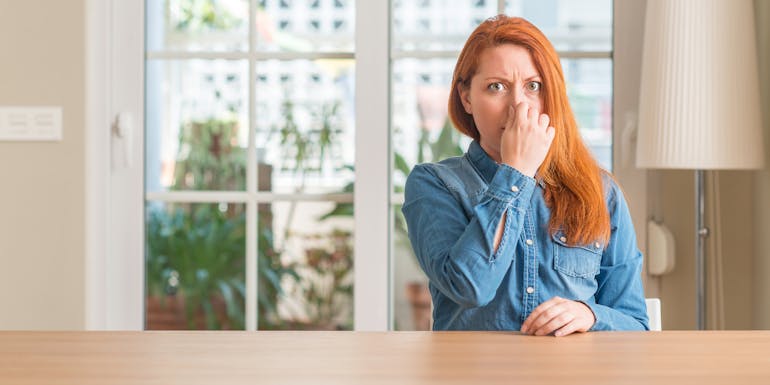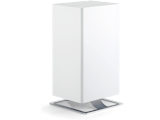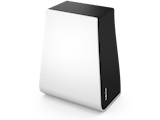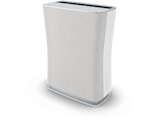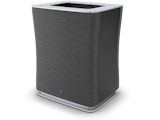
Lea Bieri, 1 February 2024
Neutralise odours
Polluted indoor air a risk to health
According to the World Health Organization (WHO), the air indoors is 2 to 5 times more polluted than the air outdoors. Did you know that? Nowadays, we spend around 90% of our time indoors. That means that we are often exposed to poor air without knowing or noticing it – and that can present a risk to our health. The pollutants in indoor air come from various sources: from us, the street, nature, furniture, clothes and many more. We breathe in these pollutants every day which can promote symptoms of allergies, cause allergies or also intensify other ailments. Ventilation doesn’t really help: depending on the situation, it can even have a detrimental effect on air quality. Air purifiers and air washers are a much better solution. Find out more here and now about the poor air in our houses and about what you can do to create optimum air quality indoors.
Read on to find out:
- Air pollution in our homes
- Sources of indoor air pollution
- What purifies the air and what doesn't
- Improve your quality of life
Air pollution in our homes
It is difficult to tell whether the air quality really is good, especially within our own four walls. One of the few indicators we have is smell. If we notice an unpleasant smell, we can get to the bottom of it. We can identify and remove the source. However, we hardly notice indoor air pollutants such as pollen, bacteria, viruses, fine dust, volatile organic compounds, etc., if at all. These particles and gases float in the air and affect our breathing without us hardly noticing them. While short-term exposure is usually not a problem for healthy people, for people who suffer from allergies, asthma and lung diseases it is a whole different matter. Symptoms (in certain cases even the disease itself) are exacerbated by permanent exposure. Babies, children, pregnant women, the elderly and the sick are also particularly susceptible to pollutants in the air. In the long term, poor quality indoor air – according to the type of pollutant – can also make healthy people ill. That is why it is important for us to raise awareness of healthy indoor air. The pollution the air indoors is an issue about which little is known but which affects us all. The purpose of this article is for us to help people gain a better understanding of the topic of optimum and healthy indoor air. Because let’s be honest: do you know where all the pollutants come from?Sources of indoor air pollution
Indoor air pollutants come from various sources and can be divided into two different types: particulate and gaseous. Particulate pollutants include fine dust, animal hair, pollen, mould spores, smoke, bacteria and viruses while the gaseous type include smells, volatile organic compounds (VOCs), formaldehyde and ozone, for example.
These air pollutants have a wide range of sources including us: we shed hair and flakes of skin and emit bacteria and viruses into the air when we exhale. Another source is the outside world, with exhaust fumes from the street outside your house or pollen and dust from nature. Building materials and furniture can also give off toxic fumes which remain in the air. The same applies to textiles, wall paint, electronic devices, candles, joss sticks, all types of cleaning products – even air fresheners with synthetic fragrances can pollute the air indoors. There is a long list of sources, ranging from nature to chemical agents. Although it is impossible to remove every source of pollution from a room, it is possible to purify the air efficiently.
What purifies the air and what doesn't?
Unfortunately, ventilation alone is not enough to purify polluted indoor air. It does not purify the air, it only brings fresh air in from outside and transports a small proportion of the indoor air outside. Depending on where you are, for example if you live on a main street where there are exhaust fumes, the indoor air will become even more polluted by the outside air. However, that doesn’t mean that you should dispense with ventilation: it is important to provide the correct type of ventilation on a regular basis. The best idea is to carry out inrush airing in the morning and in the evening, by opening all the windows to create a draught and leaving them open for 2-10 minutes depending on the time of year.
An air purifier or an air washer on the other hand will help to make the air quality indoors significantly healthier. These devices filter or wash most of the particles, fine dust, bacteria, pollen, viruses and animal hair out of the air. After filtering or washing, the device emits the purified air back into the room. As a result, the air quality is improved significantly and you can breathe easily and deeply.
The two systems work in different ways. Air purifier usually have one or more HEPA, electrostatic or activated carbon filters. HEPA and electrostatic filters remove particulate pollutants and activated carbon filters remove gaseous pollutants from the air. Activated carbon filters can also filter unpleasant smells such as tobacco smoke from the air. Our air purifiers Roger, Roger little and Viktor all have activated carbon filter systems.
Air washer pass the air over discs turning in water so that the dirt particles are washed out of the air and into the water. Smells are also removed from the air at the same time. Air washers not only purify the air but also humidify the purified air, turning devices like our George and our Robert into 2 in 1 heroes.
Improve your quality of life
An air purifier can bring great relief to people who suffer from allergies, asthma and lung diseases. Air purifiers can help to alleviate symptoms and respiratory problems. An air purifier or air washer can also improve the quality of life of people without any ailments. Clean indoor air means that the air you breathe is of better quality and less damaging to your airways. As a result, you will be more active and efficient, able to sleep better and your general well-being will improve. Improve your quality of life by breathing healthier air at home and in the office.
Would you like to find out more about air purification? On our information page you will find useful tips and tricks as well as everything you need to know about indoor air purification.
If you have questions related to indoor room climate, please get in touch with us. Or subscribe to our newsletter to regularly get informed about current topics regarding indoor climate, experience reports or Stadler Form insights.

